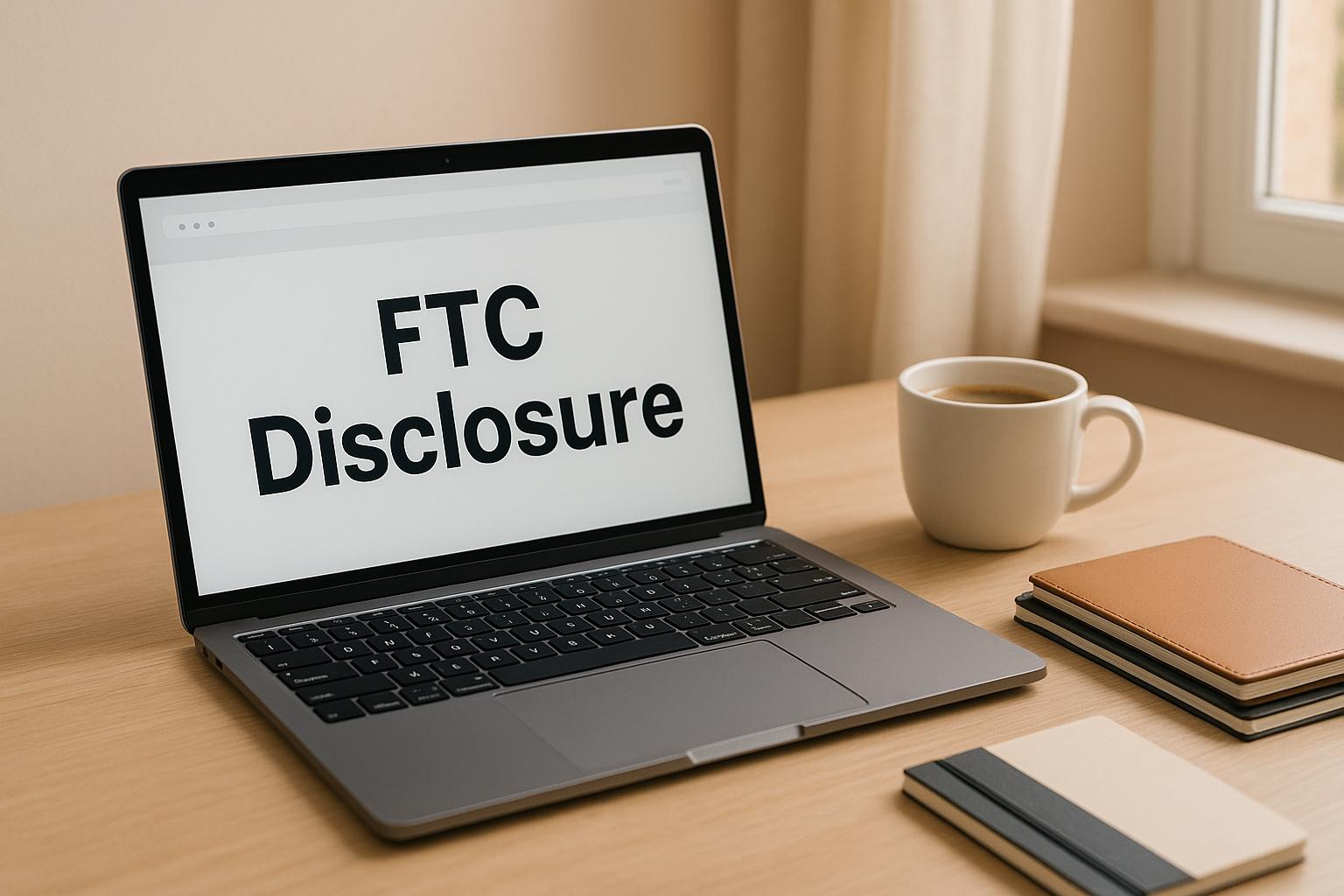
If you’re an influencer promoting products or services, the Federal Trade Commission (FTC) requires you to clearly disclose your ties to brands. These rules apply to everyone - whether you have 500 followers or 5 million. Non-compliance can lead to fines of up to $51,744 per violation, so transparency is critical.
Here’s what you need to know:
- Disclose Material Connections: If you’re paid, receive free products, or have personal ties to a brand, you must disclose it.
- Be Clear and Visible: Use simple terms like “Ad” or “Sponsored” and place disclosures where they’re easy to see.
- Tailor Disclosures by Platform: For Instagram, include them in captions. For videos, use both visual and verbal disclosures. Repeat disclosures during live streams.
- Avoid Common Mistakes: Don’t hide disclosures in hashtags, rely solely on platform tools, or use unclear terms like “collab.”
Failing to follow these rules can harm your reputation, limit brand collaborations, and lead to legal consequences. Transparency isn’t just about compliance - it’s about building trust with your audience and ensuring ethical practices in influencer marketing.
Lawyer Explains FTC Endorsement Guides for Influencers
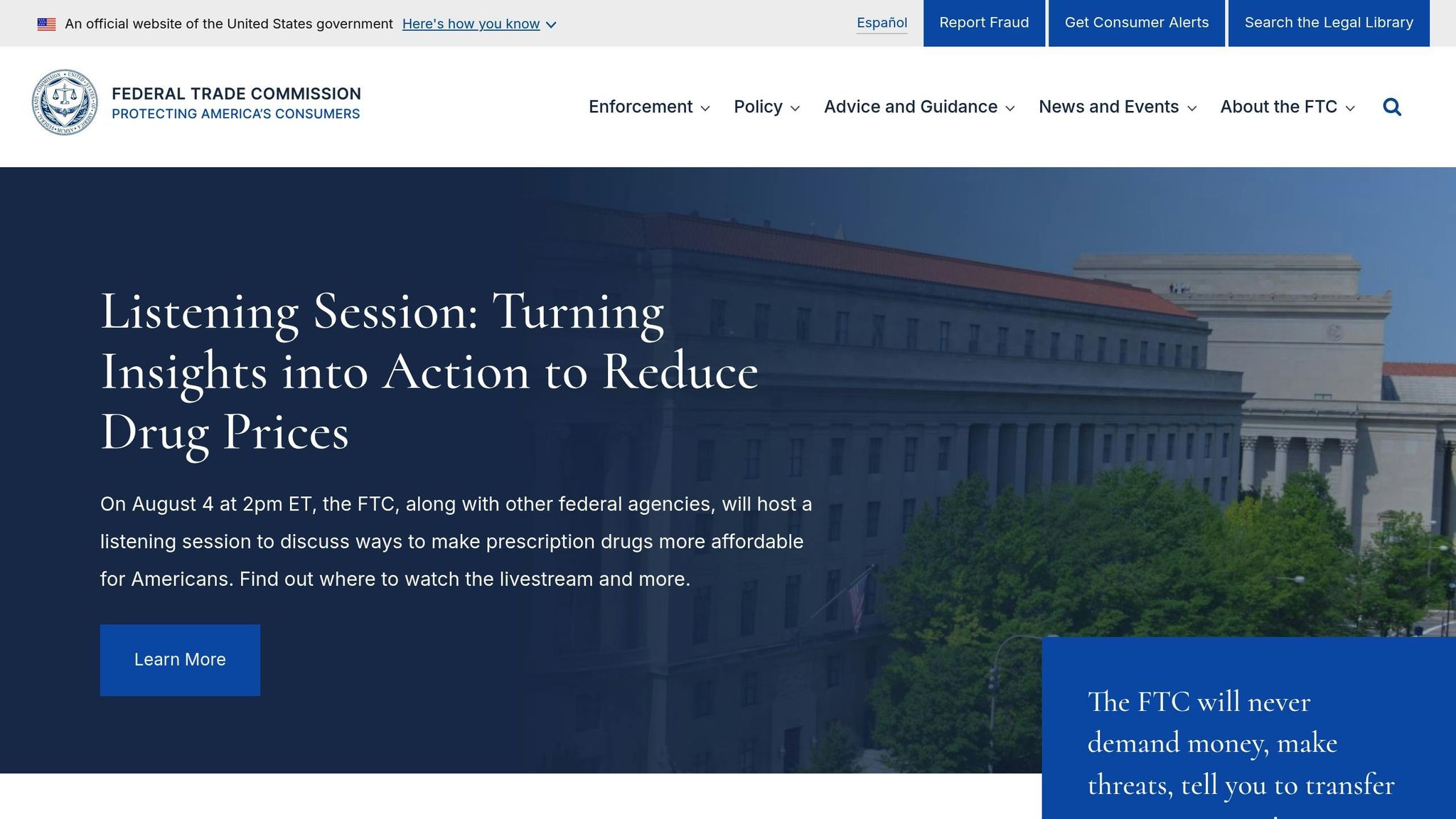
Key Requirements for FTC-Compliant Disclosures
Complying with FTC guidelines isn't just about casually mentioning a brand partnership. It's about ensuring your audience clearly understands the relationship. The FTC has laid out specific rules to make sure disclosures are both visible and easy to grasp.
General Principles for Clear Disclosures
The FTC's updated Endorsement Guides emphasize the importance of clarity:
"The updated Endorsement Guides now define a 'clear and conspicuous' disclosure as one that is 'difficult to miss (i.e., easily noticeable) and easily understandable by ordinary consumers.'" [FTC Endorsement Guides]
This means your disclosure should be impossible to overlook. It needs to be placed right next to your endorsement - no hiding it in fine print or behind a "more" button. Use straightforward language like "Sponsored", "Ad", or "Thanks to [Brand] for the free product." Avoid unclear abbreviations such as "sp", "collab", or "ambassador" unless you explain them.
For visual content, size and contrast are crucial to make disclosures stand out, while audio disclosures should be delivered at a clear volume and pace. In every format, simplicity is key.
Next, let's look at how these principles apply across different social media platforms.
Platform-Specific Disclosure Guidelines
The way you disclose partnerships can vary depending on the platform you're using. Here's how to adapt:
- Instagram and Facebook Posts: Include your disclosure directly in the caption so it’s visible without extra clicks. For example, content strategist Diandra Escobar made her connection with SEMrush clear by mentioning it in her post.
- Video Content (YouTube and TikTok): Use both visual and verbal disclosures within the video itself. Don’t rely on the description or comments alone - viewers need to understand the partnership even if they watch without sound.
- Live Streaming (Twitch, YouTube Live, TikTok Live): Since viewers can join at any point, repeat your disclosure periodically. Use both spoken and on-screen reminders during the stream.
- Temporary Content (Instagram Stories, Snapchat): Add overlay text directly onto images or videos. Make sure the text is large, easy to read, and stays visible long enough for viewers to process it.
- Character-Limited Platforms (Twitter): Use short but clear terms like "[Brand] Ambassador" or "[Brand] Partner" to fit within the platform's constraints.
Language and Timing of Disclosures
Consistency in language and timing is essential to ensure your audience fully understands the nature of the endorsement.
Always use the same language as your endorsement to avoid confusion. For example, if your content is in English, your disclosure should be too.
Timing matters just as much. For podcasts, mention the disclosure at both the beginning and end of the episode, and include it in the written description. In videos, make sure the disclosure appears both visually and audibly within the content itself - not just in the description.
Position your disclosure where it’s impossible to miss. Avoid burying it in a group of hashtags or links, as this can reduce its visibility. While tools like Instagram's "Paid Partnership" tag are helpful, they should complement your own clear disclosure, not replace it.
For longer content like live streams or podcasts, repeat your disclosures periodically to ensure all viewers or listeners are informed, no matter when they tune in.
Avoiding Common Disclosure Mistakes
Even the most diligent influencers can slip up when it comes to complying with FTC guidelines. Recognizing these common mistakes is key to avoiding fines and maintaining your audience's trust.
Examples of Non-Compliant Practices
One of the biggest missteps influencers make is hiding disclosures where they’re hard to spot. For instance, tucking "#ad" at the end of a long list of hashtags doesn't cut it under FTC rules. Similarly, vague terms like "collab", "partnership", or "ambassador" without further explanation leave followers guessing about the nature of your relationship with the brand.
Another common issue is relying too heavily on platform-provided tools. While these tools - like Instagram’s “Paid Partnership” tag - are helpful, they don’t replace the need for clear, upfront disclosures.
Inconsistent disclosures across platforms also lead to problems. For example, you might properly disclose a sponsorship on Instagram but forget to do so when sharing the same content on TikTok or Twitter. Each platform requires its own clear and specific disclosure, regardless of where the content originated.
Language mismatches are another frequent error. If your content is in a language other than English, your disclosure must match that language. Using "#ad" in an otherwise non-English post doesn’t meet FTC standards.
Best Practices for Clear Disclosures
Avoiding these pitfalls is straightforward with the right approach. For instance, a fashion influencer sharing a photo in a designer outfit should start their caption with something like:
"Sponsored by @DesignBrand – they sent me this outfit, and I absolutely love it! (#ad)" instead of burying the disclosure at the bottom.
For video content, transparency is most effective when it’s immediate and obvious. A tech reviewer might open their video by saying:
"This video is sponsored by XYZ Corp. They provided the phone for free and are compensating me to share my experience with it" while also using the platform’s paid promotion notification. On TikTok, combining the branded content toggle, overlay text like "#Ad for BudgetApp," and verbal mentions during the video ensures clarity.
The difference between compliant and non-compliant disclosures boils down to placement and clarity. Effective disclosures are easy to find, use plain language, and don’t make viewers dig for details about your brand partnerships.
Consequences of Misleading or Missing Disclosures
Failing to disclose properly not only erodes trust but also comes with hefty consequences. Repeated violations can lead to significant financial penalties, as fines add up quickly when multiple non-compliant posts are involved.
Beyond the monetary aspect, disclosure failures can severely harm your reputation. Brands are increasingly cautious about partnering with influencers who have a history of FTC violations. This can limit future opportunities, as no company wants to risk its reputation by associating with someone who doesn’t follow the rules. And once your audience feels misled, rebuilding that trust can be an uphill battle.
The FTC makes it clear where the responsibility lies:
"As an influencer, it's your responsibility to make these disclosures, to be familiar with the Endorsement Guides, and to comply with laws against deceptive ads. Don't rely on others to do it for you."
In other words, you can’t shift the blame to brands, agencies, or platforms. The FTC holds influencers to the same standards as traditional advertisers. Claiming ignorance of the rules won’t shield you from penalties.
Finally, it’s not just influencers who face scrutiny. Brands working with non-compliant creators can also find themselves in hot water with the FTC. To avoid this, many companies enforce strict disclosure requirements in their contracts. Failing to meet these standards could result in campaign termination or even legal action from the brand itself.
sbb-itb-3858882
Staying Compliant with New Trends and Technologies
As new platforms and AI tools reshape the digital landscape, staying on top of disclosure practices is more important than ever. Influencers and brands must adapt their methods to ensure transparency while maintaining clarity.
Disclosure Rules for AI-Generated Content
AI is no longer a futuristic concept - it's part of everyday content creation. From virtual influencers to AI-assisted writing tools, these technologies now play a big role in shaping online content. The FTC makes it clear: its rules apply equally to both human-generated and AI-generated content. This means if AI is involved in creating sponsored content, you’ll need to make a "dual disclosure" - letting your audience know both that the content is sponsored and that AI was used to create it.
The rules for placement are the same as for traditional disclosures. For written posts, place both disclosures at the start of the caption. In videos, include on-screen text and a verbal statement. For audio-only content, make sure both disclosures are clearly mentioned.
Here’s an example of what a proper AI disclosure might look like:
"Sponsored by XYZ Beauty, created with AI. Recommendations and reviews are AI-generated."
Non-compliance isn’t something to take lightly. The penalties for failing to meet these requirements can be steep. A recent case highlighted this, with companies facing millions in fines and bans for deceptive practices.
"If a creator or brand fails to disclose a paid relationship or does it poorly there could be serious consequences. The FTC can now impose civil penalties of up to $51,744 per violation." – inBeat Agency
Handling New Platforms and Content Formats
As new social platforms and content formats emerge, the way content is shared continues to evolve. But one thing stays the same: the FTC’s disclosure rules apply everywhere, regardless of the platform.
Whether it’s short-form videos, live audio, or AR filters, your disclosures need to be clear and easy to spot - even on platforms with character limits or unique design constraints. By maintaining consistent disclosure practices across all platforms, you ensure your audience is always informed.
Trust remains a major factor for consumers. In fact, 81% of people say trust in a brand is a key part of their purchasing decisions, and 86% believe businesses need to be more transparent than ever before.
The bottom line? Keep your disclosure practices consistent, clear, and audience-focused - whether you’re posting on the latest app or a long-established platform. Transparency builds trust, and trust builds lasting relationships.
Conclusion: Importance of Transparency in Influencer Marketing
Transparency isn't just about following the law - it's the cornerstone of effective influencer marketing. By adhering to FTC disclosure rules, you're doing more than avoiding penalties; you're fostering trust with your audience.
In 2024, deceptive endorsements led to a staggering $5.7 billion in consumer losses. Since 2021, about one in four people who reported losing money to fraud said it started on social media, with total losses reaching $2.7 billion. These numbers show why the FTC enforces disclosure rules so strictly - and why honesty is non-negotiable for your audience.
Clear disclosures aren’t just a legal safeguard; they’re key to earning consumer trust. For influencers, being upfront strengthens audience loyalty and opens doors to more enduring brand collaborations. Brands that align with creators who follow the rules face fewer regulatory risks and enjoy stronger reputations. When consumers know the true nature of endorsements, they can make better-informed choices.
As influencer marketing evolves with new platforms and AI-driven tools, one principle remains unchanged: authenticity always prevails. Influencers who disclose partnerships clearly - using terms like "Ad" or "Sponsored" and placing these notices where they’re impossible to miss - are the ones who build lasting careers.
Transparency benefits everyone. Ethical practices by influencers elevate the industry, reducing the skepticism that can undermine genuine collaborations. By making disclosure a natural part of your content, you’re not just following guidelines - you’re helping create a more trustworthy digital space where honest recommendations thrive.
Put transparency at the heart of your strategy. It’s the key to earning your audience’s trust, strengthening brand relationships, and ensuring long-term success.
FAQs
What happens if influencers don’t follow FTC disclosure rules?
Influencers who don't comply with FTC disclosure rules risk civil penalties of up to $51,744 per violation. Each instance of failing to disclose sponsored content properly can rack up hefty fines. But it’s not just about the money - non-compliance can also result in legal action and seriously harm your reputation. This could jeopardize future collaborations and erode the trust of your audience.
To avoid these pitfalls, make sure every sponsored post or endorsement is clearly disclosed according to FTC guidelines. Transparency is key!
What are the best practices for influencers to make their sponsored content disclosures clear and visible on social media?
To make sure your sponsored content disclosures are clear and easy to spot, here are some practical tips:
- Put disclosures upfront: Use terms like #ad or #sponsored right at the start of posts, captions, or videos so they’re immediately visible.
- Stick to simple language: Avoid using unclear terms or abbreviations that could confuse your audience.
- Keep disclosures close to endorsements: Place them near the product or service mention - don’t hide them in fine print or bury them in a sea of hashtags.
- Tailor disclosures to the platform: For instance, in videos, include both verbal disclosures and on-screen text. During live streams, make sure to repeat disclosures at regular intervals.
By making your disclosures straightforward and easy to understand, you not only stay compliant with FTC rules but also strengthen trust and transparency with your audience.
How can influencers ensure proper FTC disclosures when using AI-generated content or new social media platforms?
Influencers must ensure their disclosures are clear, noticeable, and straightforward, no matter the platform or type of content. If you're using AI-generated content or experimenting with platforms like Threads, it's crucial to openly state both the role of AI in creating the content and any material relationships, such as sponsorships or payments.
Place disclosures where they're hard to miss - at the start of videos, visibly within posts, or repeated during live streams. When it comes to AI-generated content, be upfront about its origin so your audience knows exactly how it was created. These steps not only align with the FTC's updated rules but also help maintain your audience's trust.





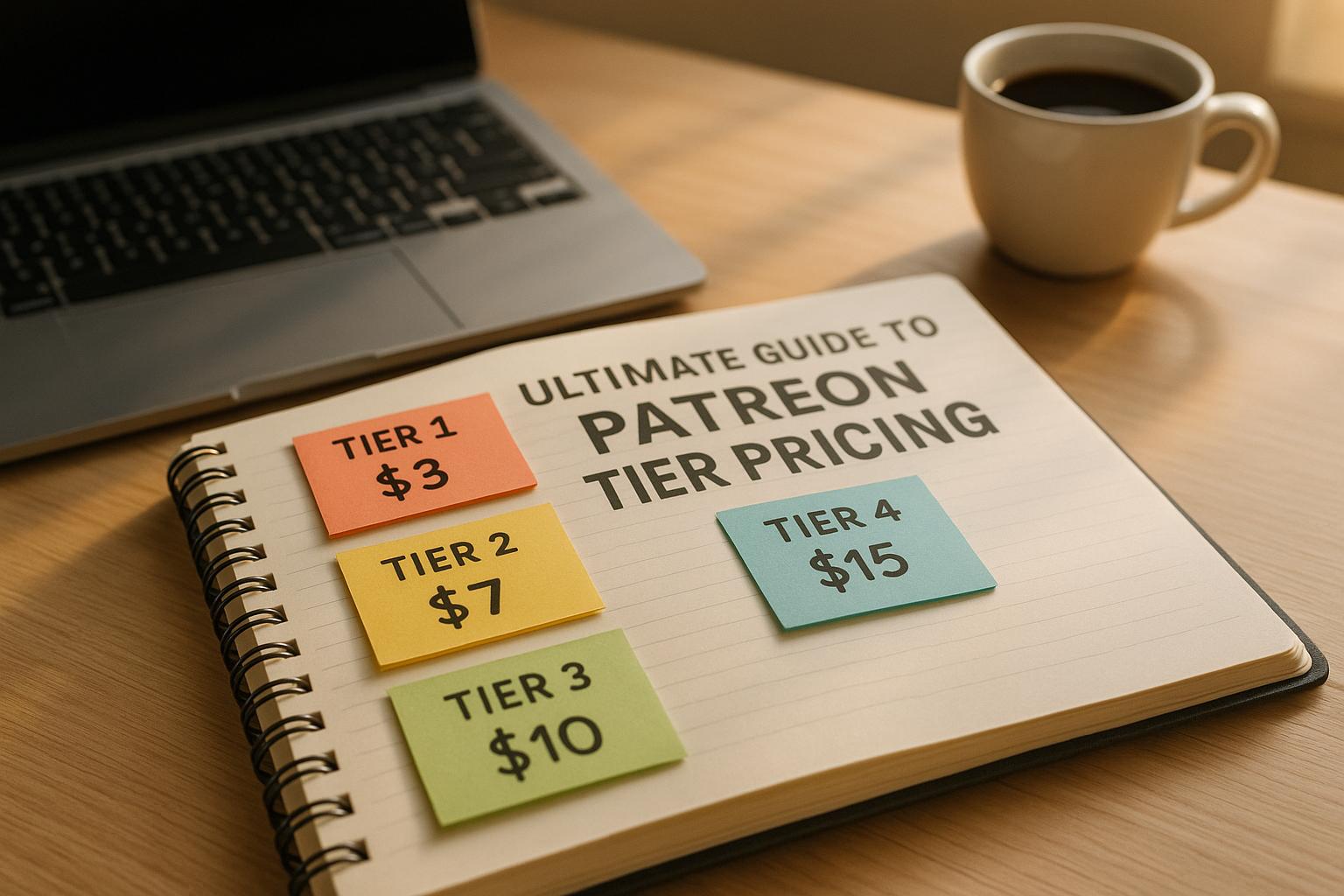
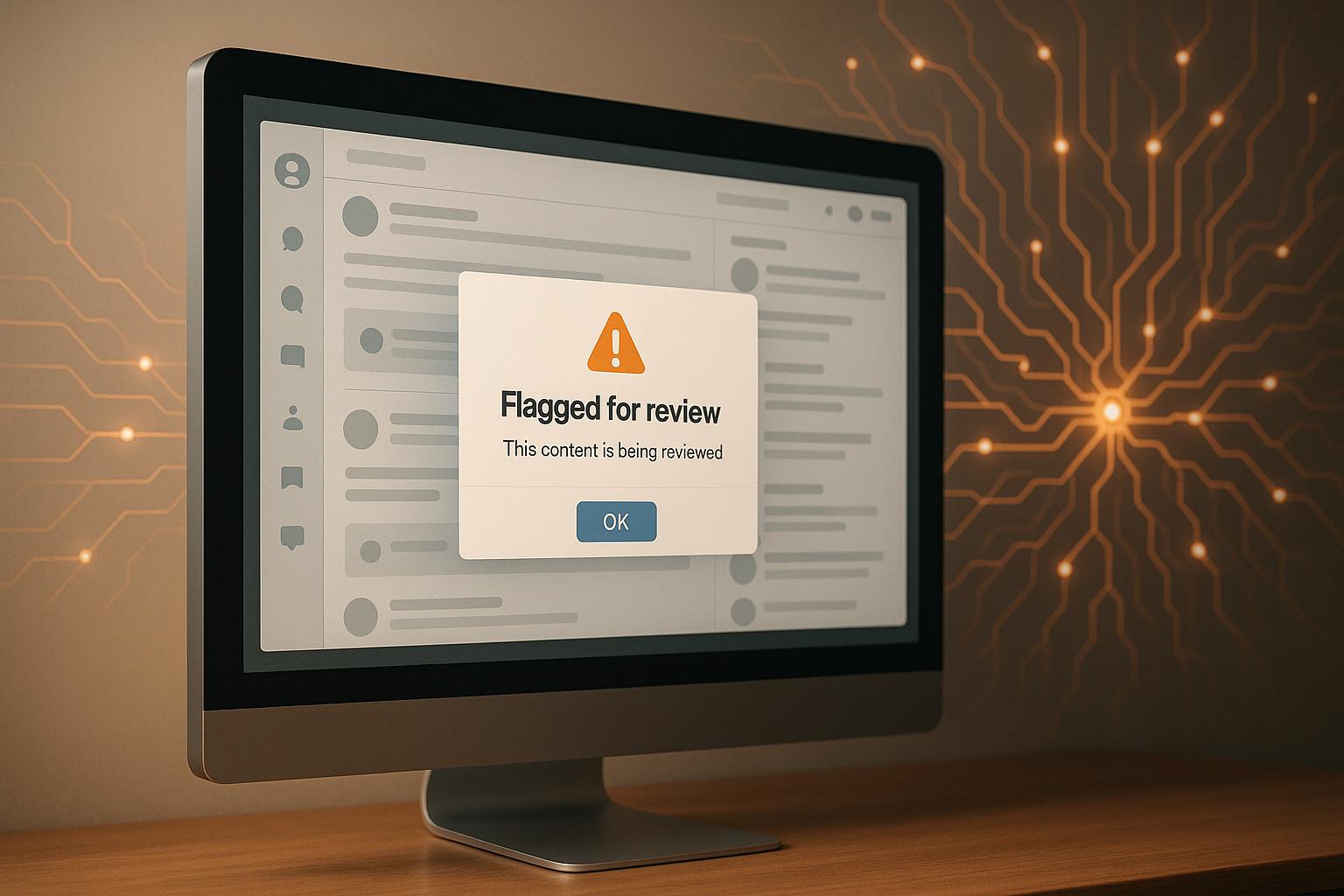








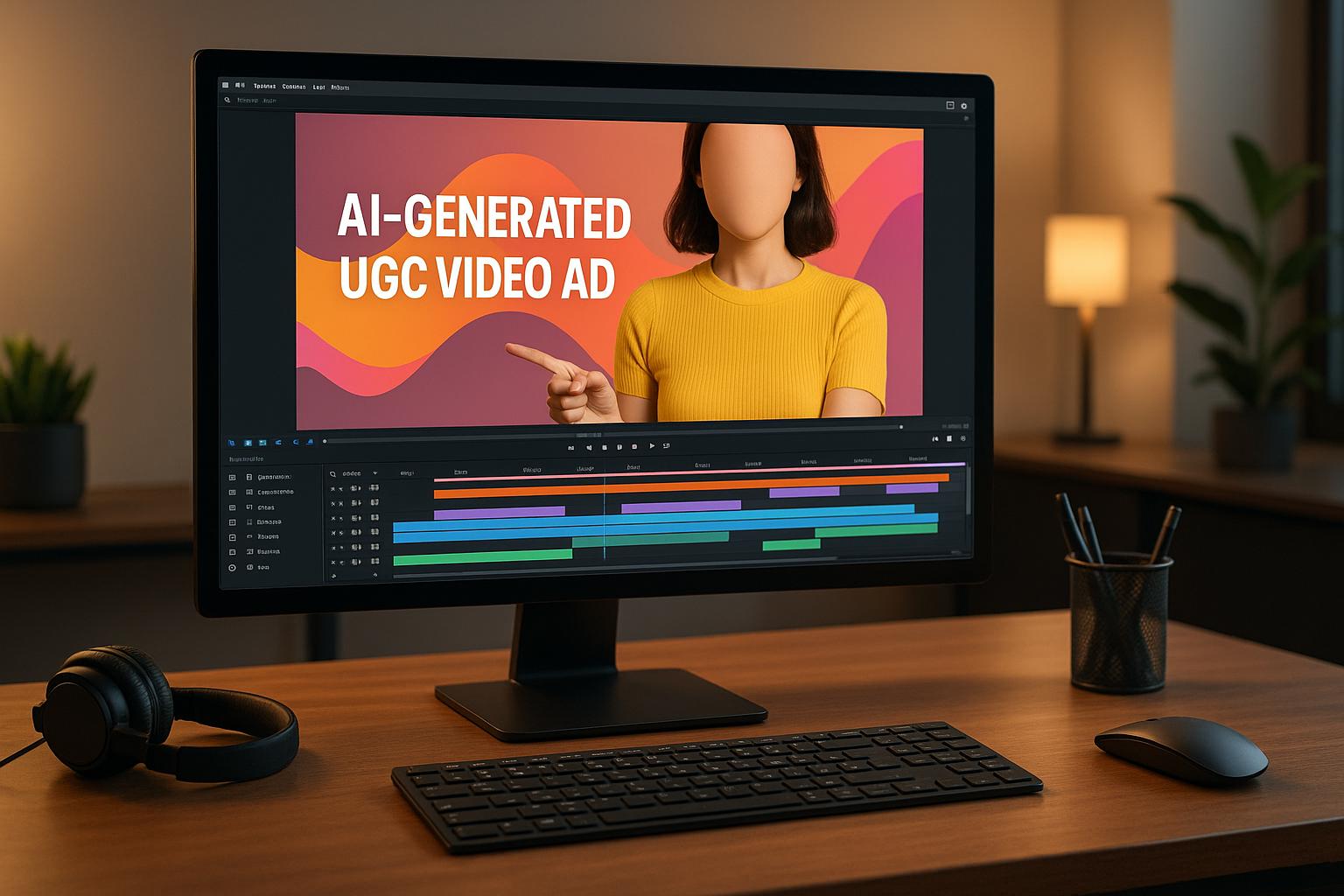


































![Top 7 Best Instagram Growth Services in 2025 [RESULTS]](/cdn-cgi/image/fit=contain,format=auto,width=null/https://cdn.prod.website-files.com/67840d1d88a886f29a66a4c1/6795d12917ee4501b9eddf73_6795c731964f791db3b566c4-1737870861582.jpg)
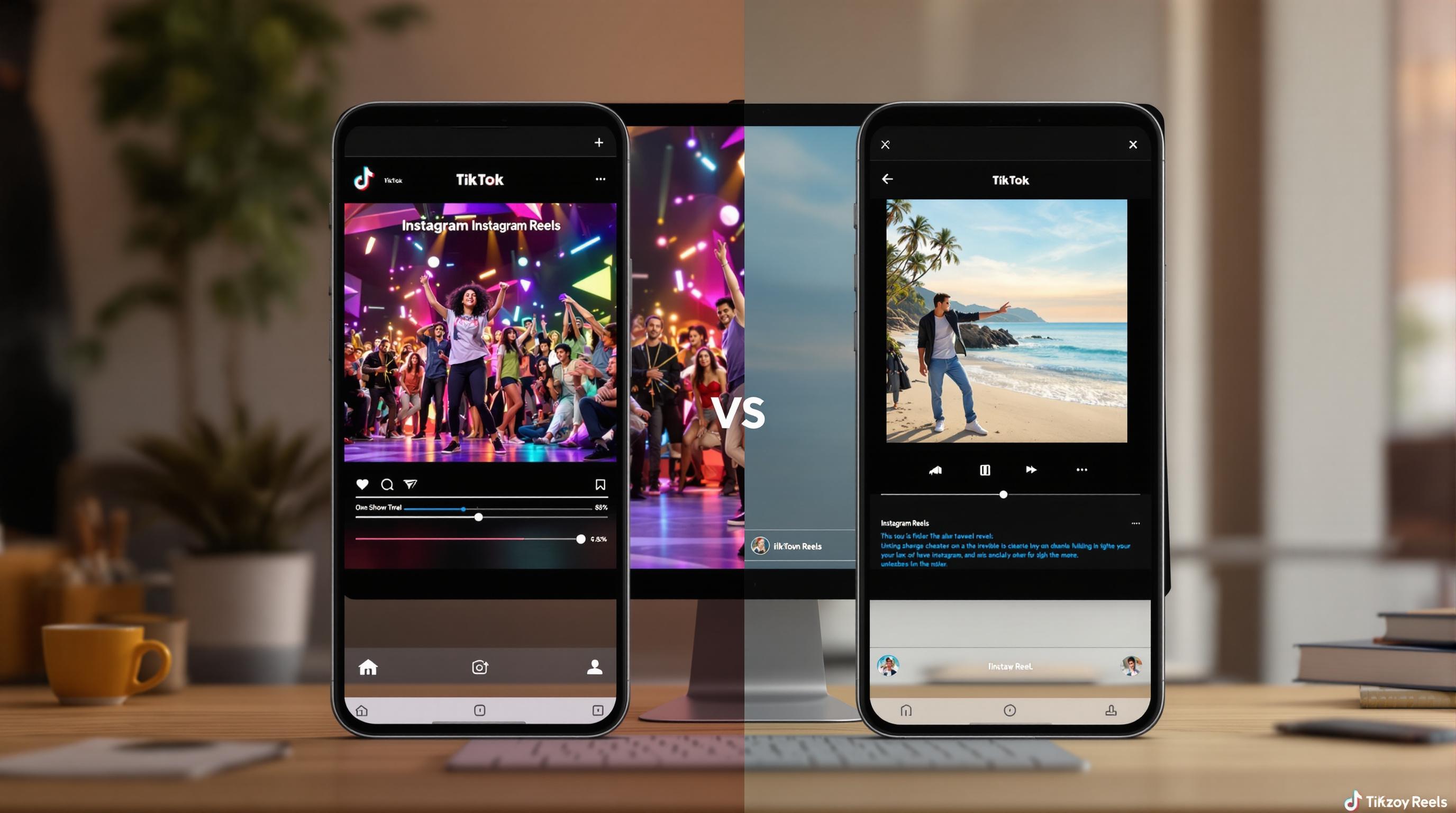

![UpGrow Review – The Best Instagram Growth Service in 2025 [TESTED]](/cdn-cgi/image/fit=contain,format=auto,width=null/https://cdn.prod.website-files.com/67840d1d88a886f29a66a4c1/6795040db42e404207732526_6794fd9c964f791db3b48de9-1737818779111.jpg)


